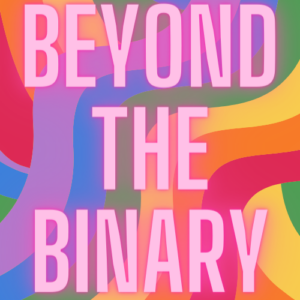By Emily McMath
Queer curating can explore the spectrum of sexuality and gender expressions. But it goes well beyond rainbow flags and audacious festivals and bare all shocking images. Queer curating, as we dissected this week, challenges viewers, artists, curators, and exhibition spaces, to think beyond the traditional binary. Beyond black and white, beyond right and left, and beyond Western standards and heteronormative rules.

Class discussion began with us trying to define “queer”. What makes an exhibit queer? What makes art queer? Does it follow the same definition as one might use to describe a queer person? And if a queer person is one who does not subscribe to the traditional binary gender roles and sexuality, but rather relishes and thrives in a gray area with more flexible rules – then so must queer curating. We might even think of it as curating that challenges the regulated existing definitions and processes of curating, identity, and meaning-making.
A crucial part of our readings and discussion was Maura Reilly’s 2021 conversation with curators Juan Vicente Aliaga, Clare Barlow, Birgit Bosold, Dan Cameron, Amelia Jones, and Jonathan Katz whose work focuses on topics of queer curation. They discuss the ever-important point that no one queer identity is the same. One must not assume that something is only ever one thing and one experience. Placing queer curating in a box is not queer curating; it must remain undefinable and unregulated to stay authentically queer.
Professor Holzman invited us to consider what a queer Museum of Broken Relationships exhibit would look like, and she highlighted two quotes from the panel for us to think about. . .
“How do we create a queer experience of seeing the work?”
Amelia Jones
“What I encourage is that all exhibitions be queer…and that we think queerly at every turn.”
Jonathan Katz
In groups, as we tried to picture the exhibit as a queer-curated experience, it became a challenge to find the balance between being heavy-handed and being almost too vague. We discussed several ideas and questions, including:.
- Theme: what does this look like?
- Feeling of not knowing what you don’t know
- Leaving knowing that you will never know the whole story
- A multisensory experience
- Who can donate objects?
- Creating a specific framework for donating queer affiliated objects
- Curate for queerness not by queerness
- Venue
- DIY – what could be a venue that wouldn’t be considered otherwise
- Beyond the “museum”
- Is it already queer as it is?
Personally, and as a queer person, I think queer curating is what gives exhibits an evocative, and playful, and philosophical aura that makes shows fun and important. To be able to place people in a space where anything and everything is reality. To steer on the side of being cliché, it validates all experiences and therefore validates the human experience. And that is what everyone is ultimately seeking – that their existence is valid and real.
Emily McMath is a second year Museum Studies graduate student at IUPUI
Works Cited
“Curatorial Activism: Queer Curating” Maura Reilly in conversation with Juan Vicente Aliaga, Clare Barlow, Birgit Bosold, Dan Cameron, Amelia Jones, and Jonathan Katz. Brooklyn Rail, March 4, 2021. https://brooklynrail.org/events/2021/03/04/curatorial-activism-part-4/
Alt text: Figure 1: A rainbow graphic with the words Beyond The Binary bolded and in pink

